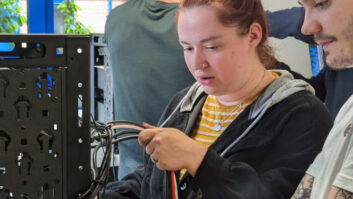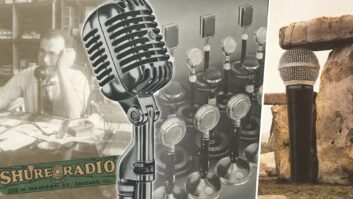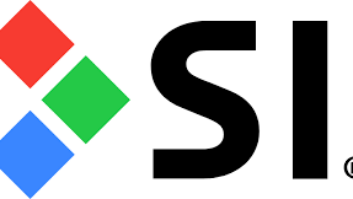Radio isn’t what it used to be.
Christmas Eve 2006 marked the 100th anniversary of the first radio broadcast that transmitted voice and music rather than Morse code. The 1906 broadcast by Reginald Fessenden from Brant Rock, Mass., included live and prerecorded music and a Bible reading, and the content was picked up by the only radios in existence at the time: ship-based Morse code receivers off the eastern seaboard.
Today, radio programs are transmitted to homes and businesses, moving vehicles and portable handheld devices. Programs are transmitted via satellite, terrestrial digital HD Radio stations, broadband Internet connections, cellular networks and Wi-Fi networks. Some terrestrial FM stations have even begun broadcasting two separate programs simultaneously after converting to the digital HD-Radio format.
Here at International CES, dealers will witness their radio options growing once again as suppliers equip more audio products with the ability to receive satellite radio broadcasts from Sirius and XM, receive digital-AM/FM broadcasts in the HD Radio format, and connect to the Internet to stream Internet radio stations.
CES will also see what could be the industry’s first home-audio products that are simultaneously XM- and Sirius-ready. They consist of three of Pioneer A/V receivers starting at a suggested $299.
Dealers will also find a proliferation of XM-ready home audio products as LG and Panasonic expand their selections of XM-ready HTiBs, Panasonic expands its selection of XM-ready shelf systems, and JVC unveils its first XM-ready HTiBs, shelf systems and boombox, joining JVC’s XM-ready A/V receivers available since last year. For their part, Sherwood will expand its selection of XM-ready A/V receivers to five from one, and Sharp will launch its first XM-ready shelf systems.
XM-ready devices control compact tuners, some embedded in palm-size XM antennas. One compact tuner, the XM mini-tuner, is a 9-volt-battery-size tuner that plugs into the base of a home antenna and removed for use in an XM-ready car audio system.
The industry’s first XM-ready home products appeared in early 2005 from Yamaha and Eton. Other companies followed quickly, including Cambridge SoundWorks, Denon, Integra, Onkyo, Pioneer Elite, Audiovox, Crosley, Harman Kardon, Samsung and Sherwood in products ranging from A/V receivers to table radios, HTiBs and stereo shelf systems.
Dealers will also find growing support for aftermarket car audio systems that accept XM’s 9-volt-battery-sized mini tuner, which can be pulled out of the car for use in the home. XM said that Panasonic, Sony, Alpine, Eclipse, Jensen, JVC, Kenwood and Clarion will announce support for the mini-tuner here at CES.
Audiovox’s first live-XM/MP3 headphone stereo, joining models from Delphi, Pioneer, and Samsung, will be introduced at CES.
JVC’s first XM-ready boombox, which also charges and controls iPods, will be at CES. The first XM-ready boombox was shipped by GPX in November 2005 and is no longer available. Such boomboxes control tiny outboard antenna/tuner combos and aren’t to be confused with boomboxes that dock with satellite radio plug-and-play tuners.
Digital radio highlights for the car include a proliferation of HD Radio car tuners bundled with adapters to plug into existing car stereo systems. They’re from Directed, Metra, Peripheral, and Visteon, joining a model from DICE.
After-market autosound companies will also offer their first head units that control XM’s new mini tuner. The companies include Alpine and Panasonic. And Alpine’s industry-first car head units that interface with plug-and-play tuners and headphone stereos from Sirius are here. Previously, most car radios offered direct connections only with black-box XM Direct or SiriusConnect tuners that could be tucked away in a hidden location.
For now, satellite radio and HD Radio have been largely automotive phenomena, but its progression into the home has been steady, suppliers said.
“Satellite radio will continue to grow and offer more entertainment solutions,” said Pioneer A/V marketing manager David Bales. “Because of subscription costs, most consumers will opt for plug-and-play tuners with home and car docking stations. [But] there will also be much consumer interest in XM- and Sirius-ready audio components and systems.”
Statistics from The NPD Group, Port Washington, N.Y., confirm continued growth in plug-and-play satellite tuners at the retail level last year (see table on p. 170) and even faster percentage growth in the home kits that connect them to home stereo systems. Based on the number of home docking kits and home satellite radios/tuners sold during the January-October 2006 period, almost 27 percent of the people who bought satellite tuners of any kind during that time were listening to satellite radio through home audio systems, even if they bought a plug-and-play tuner initially for the car, NPD confirmed. Plug-and-play tuners are packaged with car docking kits.
“The home audio industry is reacting now in late 2006 and into 2007 to tap into these sources of music,” added Philips senior VP Andy Mintz, referring to satellite, HD Radio, Internet radio and iPods.
Phil Cohn, senior sales and marketing VP for Boston Acoustics, agreed that “the consumer has a lot of choices in how they get, listen to and transport their music.” As for HD Radio, he said, “awareness among the listening audience has increased dramatically in 2006 due in great part to the push by the HD Digital Radio Alliance and focus by the broadcast community.”
Mike Klipsch, president of Klipsch Audio Technologies, believes satellite radio and HD Radio “both have great potential,” but he isn’t so sure they’ll have a big impact on home listening habits in 2007. “Satellite radio has been around for several years and is now just starting to gain momentum, thanks to the car industry. Because many vehicles are already coming equipped with Sirius and XM, people are finally getting more comfortable with it.” HD Radio, however, is a more recent development, “so it is still in a ‘trial’ period,” he claimed.
During that trial in the home, he said, the industry will find out how well HD Radio competes with Internet radio.
Klipsch agreed, however, that with more than 1,000 HD Radio stations on the air, “we are past the chicken-and-egg syndrome,” and that now the industry “will see if the HD format has legs.”
By year-end 2006, about two dozen home HD-Radio products included one-piece tabletop radios priced at $199 and up, component-size tuners at less than $200 and up, at least one three-piece shelf system at $299 from RadioShack, and tuner modules that slide inside A/V receivers or other home audio components and priced at $300 and up.
Nonetheless, said Pioneer’s Bales, “HD radio remains expensive for manufacturers to integrate into their core components at the key price points.”
On the car side, Alpine and JVC are bullish about HD radio. “Alpine fully believes that HD radio is the system of the future,” said marketing VP Steve Witt. “2007 is all about creating consumer awareness and the HD Radio Alliance will continue to invest heavily through their stations to create awareness.” The cost of hardware is coming down, he added and transportable products are entering the market, “So we believe 2007 will be a reasonably good year for HD Radio sales, which will continue to grow through 2009 at a fairly steady pace.”
JVC said sales of its KD-HDR1 car CD-receiver with embedded HD Radio took off after a late-2006 price reduction to $199. Most other suppliers offer HD-Radio-ready CD-receivers that require a $199 add-on HD Radio tuner/adapter, boosting the total source-unit cost to more than $300.
Abt Electronics buyer Neal Riffer, said, “I think [HD Radio] is a great alternative for people who don’t want the satellite radio.”
Although Internet radio isn’t accessible yet in the car, it is accessible at home, and suppliers foresee consumer interest in streaming Internet radio stations, or accessing subscription streaming services such as Rhapsody, through their home audio components and systems.
Satellite Radio Sales
(Retail Level, Jan.-Oct. 2006)













